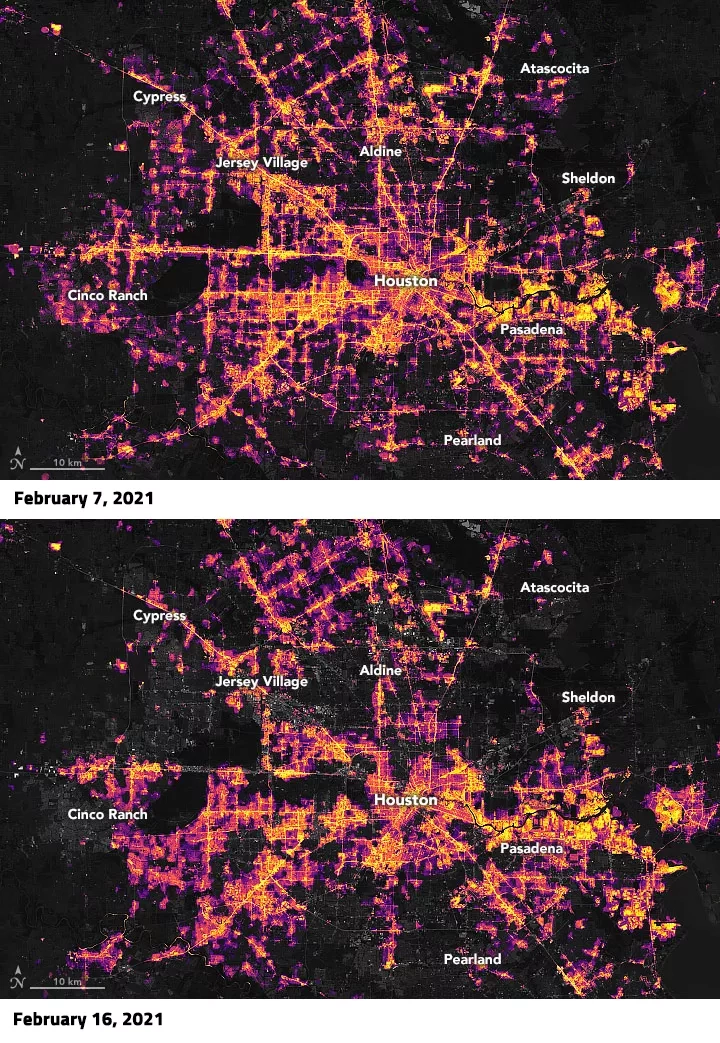A potent arctic weather system chilled much of the United States with frigid weather in mid-February 2021, shattering low-temperature records in the middle of the country. The extreme cold combined with several snow and ice storms to leave millions of people without power.
Texas was hit particularly hard. According to news reports, natural gas shortages were already limiting power generation across Texas prior to the mid-February storm. Demand intensified after the polar air mass moved in on February 13, and controlled outages and downed power lines left parts of the state in the dark.
The Houston Chronicle reported that 4 million customers across the state were without power on February 15, including 1.4 million in the Houston area. Many of those outages continued into the next day and are apparent in the images above depicting nighttime lights. Satellite data for the right image was acquired around 1 a.m. Central Standard Time on February 16; the left image was acquired around the same time on February 7, prior to the severe cold spell. Nighttime lights data have been overlaid on Landsat imagery so that city structure can still be distinguished.
The nighttime lights data were acquired with the Visible Infrared Imaging Radiometer Suite (VIIRS) on the NOAA–NASA Suomi NPP satellite. VIIRS has a low-light sensor—the day/night band—that measures light emissions and reflections. Data are processed by a team of scientists from NASA’s Goddard Space Flight Center (GSFC) and Universities Space Research Association (USRA) to account for changes in the landscape (such as snow cover), the atmosphere, and Moon phase.
The team has produced power outage maps for years. But according to Miguel Román, director of the Earth from Space Institute at USRA and a principal investigator of the “Black Marble” research team, this event is unique. Large area outages are rare in developed countries, yet this outage spans the entire state of Texas. He noted that Texas is the only state that has isolated its power grid from the rest of the country.
Read the full article at NASA Earth Observatory: Extreme Winter Weather Causes U.S. Blackouts




